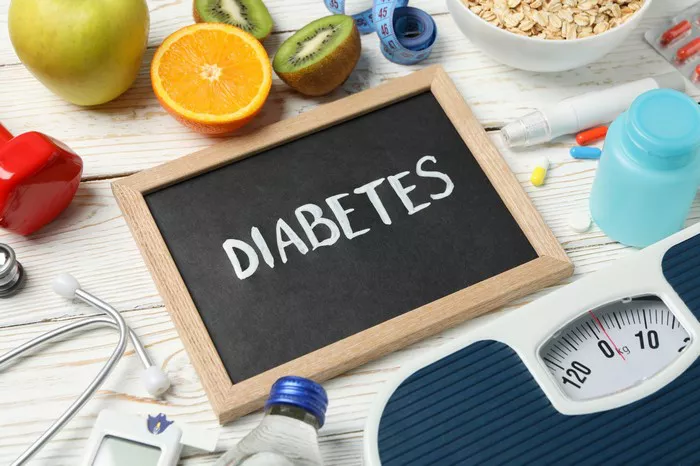Type 2 diabetes, traditionally associated with adults, is increasingly affecting children and adolescents, with alarming rates of childhood obesity, sedentary behavior, and poor diet contributing to this shift. Once rare among younger populations, the condition is now being diagnosed in pre-teens and teenagers at an alarming rate.
The rise of Type 2 diabetes in children is closely linked to insulin resistance, a condition where the body’s cells fail to properly respond to insulin, leading to high blood sugar levels. Obesity, particularly excess fat around the abdomen, is a significant factor, as it impairs insulin function and worsens insulin resistance. While genetics play a role, lifestyle choices are the primary drivers of this growing epidemic.
Globally, childhood obesity rates are on the rise, with 20-30% of school-aged children in many countries now classified as overweight. In Malaysia, data from the National Health and Morbidity Survey (NHMS) 2022 reveals that one in three adolescents aged 13 to 17 are overweight or obese, further emphasizing the gravity of the situation.
Although Type 1 diabetes, an autoimmune condition, remains the most common form of diabetes in children, the increase in Type 2 diabetes is particularly concerning. This surge can be attributed to factors such as increased screen time, reduced physical activity, and the widespread availability of processed foods high in sugars and unhealthy fats.
Recognizing the Symptoms
The symptoms of Type 2 diabetes in children can be subtle and may develop gradually over time. Common signs include:
Increased Urination and Thirst: Excess blood sugar is excreted through urine, leading to dehydration and increased thirst. Bedwetting may also occur.
Tiredness and Weight Loss: Due to insulin resistance, the body struggles to utilize glucose for energy, causing fatigue. As a result, the body may start breaking down fat for energy, leading to weight loss.
Frequent Infections: High blood sugar levels can weaken the immune system, making children more susceptible to infections, such as urinary tract infections and skin infections.
Monitoring and Diagnosis
Routine monitoring is essential for children at risk, particularly those with obesity, a family history of diabetes, or signs of insulin resistance. Screening should begin at age 10 or puberty, a period when insulin resistance naturally increases. Acanthosis nigricans, or darkened skin in areas like the neck, armpits, and groin, can also indicate insulin resistance.
Blood glucose testing can provide early detection, and a finger-prick test is a quick way to assess blood sugar levels. An HbA1c test, which reflects blood sugar control over the past three months, can offer further insight. Additional tests may be needed to distinguish between Type 1 and Type 2 diabetes.
Complications of Untreated Diabetes
If left undiagnosed or unmanaged, Type 2 diabetes can lead to severe complications. Acute conditions like diabetic ketoacidosis (DKA) and hyperglycemic hyperosmolar syndrome (HHS) can be life-threatening, while chronic complications—such as heart disease, kidney problems, and vision loss—may develop over time.
Treatment and Prevention
With early intervention, Type 2 diabetes is manageable and, in some cases, insulin resistance can be reversed. Key approaches to treatment include:
Lifestyle Changes: Encouraging a healthy diet, regular physical activity, and weight management can significantly improve health. Children should aim for at least 60 minutes of physical activity daily, and families should foster habits that promote physical fitness and balanced nutrition.
Medication: In some cases, lifestyle changes alone may not be sufficient, and medication such as metformin may be necessary to help control blood sugar levels.
Support: Emotional and psychological support, along with involvement from family members, is crucial in helping children adopt and maintain healthy habits. Regular follow-ups with pediatric endocrinologists are also important for managing the condition and preventing complications.
Community and Policy Action
Preventing Type 2 diabetes in children requires a collective effort from communities, schools, healthcare providers, and policymakers. Schools can promote physical activity through physical education programs and provide healthier meal options. Public spaces such as parks and recreation centers can offer opportunities for children to engage in physical activity, fostering a healthier environment.
The growing prevalence of Type 2 diabetes in children highlights the need for greater awareness and intervention. While prevention is the ultimate goal, early detection and timely treatment can help manage the condition, improving long-term health outcomes and quality of life for affected children.
Related topics:
Urgent Need for Research on Exercise’s Role in Managing Type 2 Diabetes in Indigenous Australians
Genetic and Environmental Factors Impact Early Type 1 Diabetes Risk in Children, TEDDY Study Reveals
Shaping the Future of Diabetes Research: Join the Australian Diabetes Clinical Trial Network



























